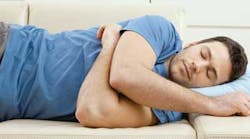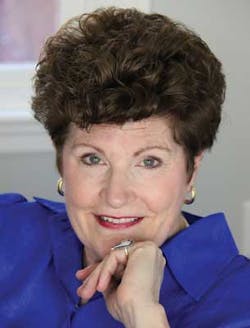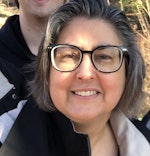What dental professionals need to know about dental sleep medicine
In this article, Dr. Demko shares her thoughts on how other dentists can become involved in treating patients with sleep apnea, how to assess patients, types of treatments currently available, and how to handle reimbursement for the treatment of sleep disorders.
Tell us about the purposes of the American Academy of Dental Sleep Medicine.
Dr. Demko: The American Academy of Dental Sleep Medicine is the only nonprofit national professional society dedicated exclusively to the practice of dental sleep medicine, with more than 2,800 dental professionals worldwide. The AADSM provides educational resources for dentists and promotes the use of oral appliance therapy for the treatment of obstructive sleep apnea and sleep-disordered breathing.
How did you become involved with dental sleep medicine?
Dr. Demko: I became involved with dental sleep medicine as a hospital dentist more than 20 years ago when I was working with sleep physicians to help their patients who suffered from obstructive sleep apnea.
How can a dentist begin to integrate dental sleep therapies into his or her practice?
Dr. Demko: The first thing interested dentists should do is educate themselves on the practice and particulars of dental sleep medicine today. I recommend taking the “Essentials of Sleep Medicine” course from the AADSM to get a robust introduction to the field of dental sleep medicine. Other dental organizations also offer courses at their annual meetings including the ADA, AGD, and most state dental societies.
Another important step, which is often outside a dentist’s comfort zone, is to create a relationship with a local sleep physician. Sleep physicians are the medical providers who diagnose sleep-disordered breathing and are responsible for the overall care of the patient. An effective and successful dentist works very closely with a patient’s sleep physician to provide optimal care. At the AADSM annual meeting in June, we offer various lectures on this topic to help members initiate and maintain strong relationships with sleep physicians.
Within their own practices, dentists can begin to integrate dental sleep therapies by starting sleep-focused conversations with patients. It is amazing that adding the question Do you, or anyone in your family, snore? to the standard medical questionnaire can help uncover a huge population in need of care. It is also important to note that obstructive sleep apnea (OSA) is highly heritable and often will be found in children of snoring parents. The American Academy of Pediatrics recently issued guidelines stating that any child who snores consistently or has daytime behavior problems should be referred to a sleep physician for testing. Asking a simple question can open the door to this rapidly growing field.
What type of clinical training is available for dentists in the area of dental sleep medicine?
Dr. Demko: The clinical aspect of treating sleep-disordered breathing, be it snoring or sleep apnea, requires basic skills that have been taught to dentists in their restorative dental training. The most important aspect is the academic knowledge required to become part of a team that is treating a medical disease. This involves significant didactic education and a good basic understanding of the literature. The AADSM has suggested reading lists and literature review courses that help dentists new to the field cope with the vast evidence-based insights on dental sleep medicine.
Dental schools are also beginning to offer clinical training courses, though there is much room for growth in this area. Within the last year, Tufts University Dental School started a one-year program in head and neck pain and dental sleep medicine. Other dental schools, such as the University of Texas San Antonio and UCLA, are starting to offer mini-residencies in dental sleep medicine or weekend courses. The independent postgraduate institutes that offer continuing dental education have also started to provide training in the field. I look forward to watching many more dental schools find space in their curricula for this important topic.
What percentage of your patient base is currently being treated for sleep disorders?
Dr. Demko: I stopped practicing general dentistry in 1997 and today limit my practice to the treatment of patients with obstructive sleep apnea. Because research shows that 40% of the American population snores and as many as 16% has diagnosable OSA, I would have to assume that the percentage of adult patients in need of treatment for sleep disorders at any general dental practice would also reflect these statistics. With more than 80% of the sleep-disordered breathing maladies undiagnosed, the vast majority of patients are not even seeking help. Most dentists do not even ask if a patient snores. For me, this simply highlights the great opportunity that exists for dentists interested in providing sleep solutions for their patients.
How do you assess patients for sleep disorders, and how do you incorporate this testing into your practice?
Dr. Demko: Because sleep-disordered breathing (SDB) is a medical disease, all diagnoses must legally be done by a physician. As a dentist, screening patients with questionnaires and physical examination — designed to identify key physical attributes that correlate with SDB, including a large tongue or long soft palate — helps me set my patients on the path of proper medical care. Having a physician with whom I have a close relationship is critical to provide a team approach for my patients and practice within my scope of licensure. Dentists have long screened for blood pressure and helped with smoking cessation without being responsible for the medical care of the patient. Because actual testing for SDB lies within the medical arena, licensing bodies, such as the state of New Jersey, have already forbidden any dentist to test patients for sleep-disordered breathing.
What types of treatments seem most effective for your patients?
Dr. Demko: There are multiple modalities for treating snoring and obstructive sleep apnea, but one of the most effective options for my patients is oral appliance therapy. Patients often prefer the more user-friendly option of an oral device because of the ease of use, portability, and the fact that it requires no surgical intervention. Oral appliances are an effective alternative treatment to positive airway pressure (PAP), the recognized standard treatment that can be difficult for patients to tolerate.
Other effective treatments include weight loss and telegnathic surgery (maxillofacial osteotomies for the treatment of OSA and not just a skeletal abnormality). Soft tissue (throat) surgery is less often effective and more physicians are referring patients for oral appliance therapy.
How do you handle reimbursement for sleep-related treatments?
Dr. Demko: Virtually all medical insurers (including Medicare) in the United States now cover oral appliance therapy as they would a PAP machine if the patient has been diagnosed with moderate to severe OSA by a physician. I am in-network with many medical insurance companies so that much of the cost of treatment is covered for my patients. Medical insurers do not cover treatment for simple snoring. The cost for this treatment is typically borne by the patient, as it is for much of the cosmetic dentistry we do. Guidelines for medical coverage are available online from all major medical insurers.
Is there anything else you would like to add?
Dr. Demko: Today, there is a huge opportunity for more dentists to specialize in dental sleep medicine. There are more than 100, 000 general dentists in the United States, and every day we examine the oral structures of multiple patients. Dentists can and should be the frontline screeners for patients with potential SDB. We are in a unique position to identify the problem and refer patients to knowledgeable sleep physicians who understand that PAP is not the proper treatment for everyone. Knowledge and teamwork are the keys. We can work with sleep physicians, otolaryngologists, and maxillofacial surgeons to provide our patients with much-needed relief, increased health, and an improved lifestyle. Obstructive sleep apnea has severe consequences not just on a person’s health, but time lost from work, industrial accidents, and automobile accidents caused by drowsy drivers. The complaint I hear most often from the sleep physicians I know is that they cannot find a local dentist who is well versed in the overall treatment of patients with sleep-disordered breathing. Together we can change that, but it requires a commitment to further study in the fast-growing field of dental sleep medicine.








